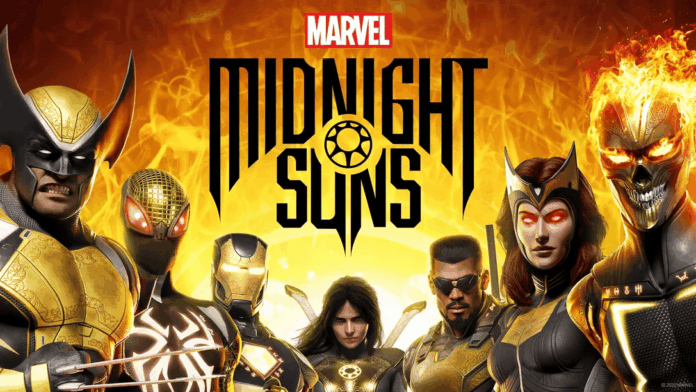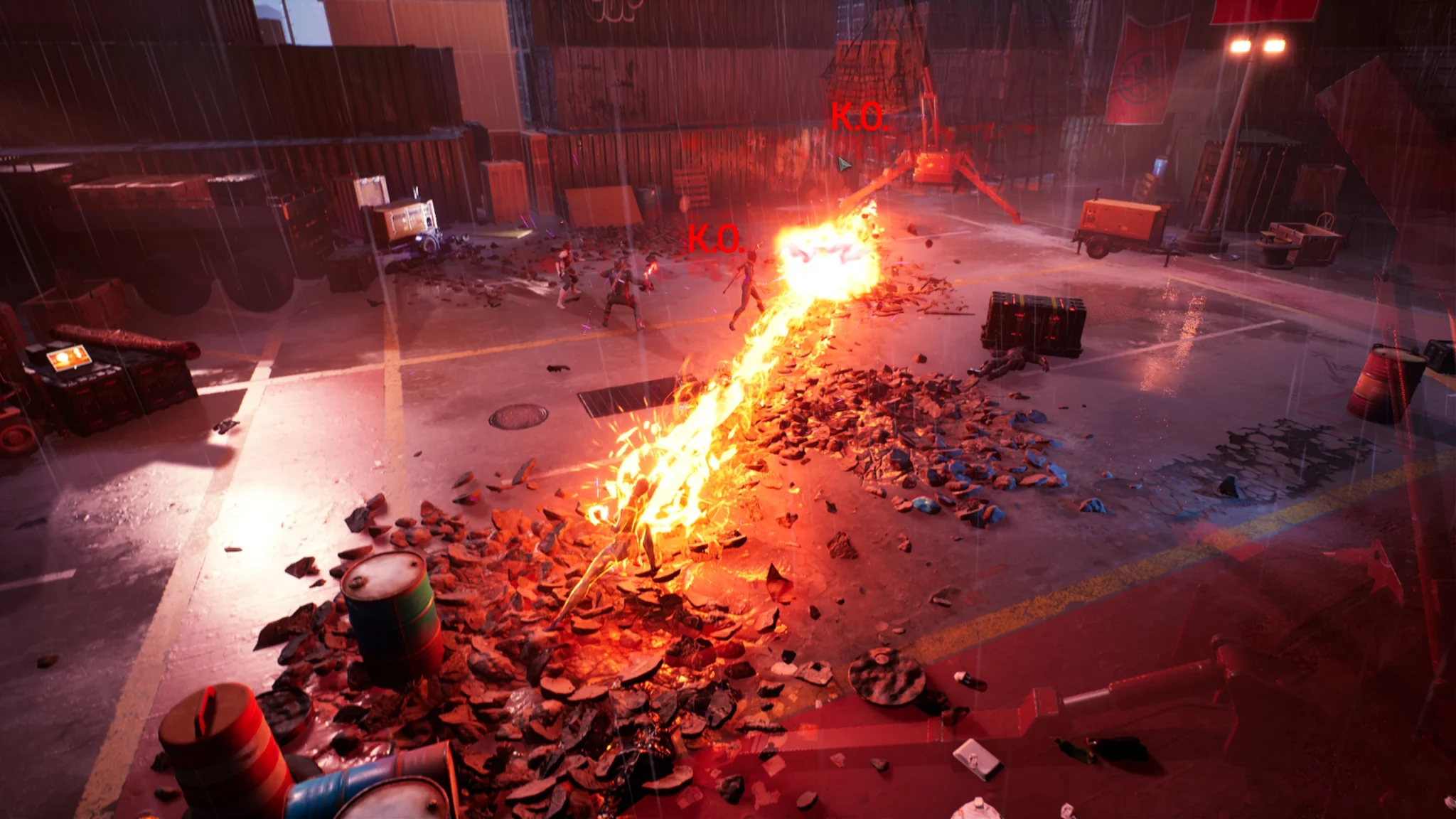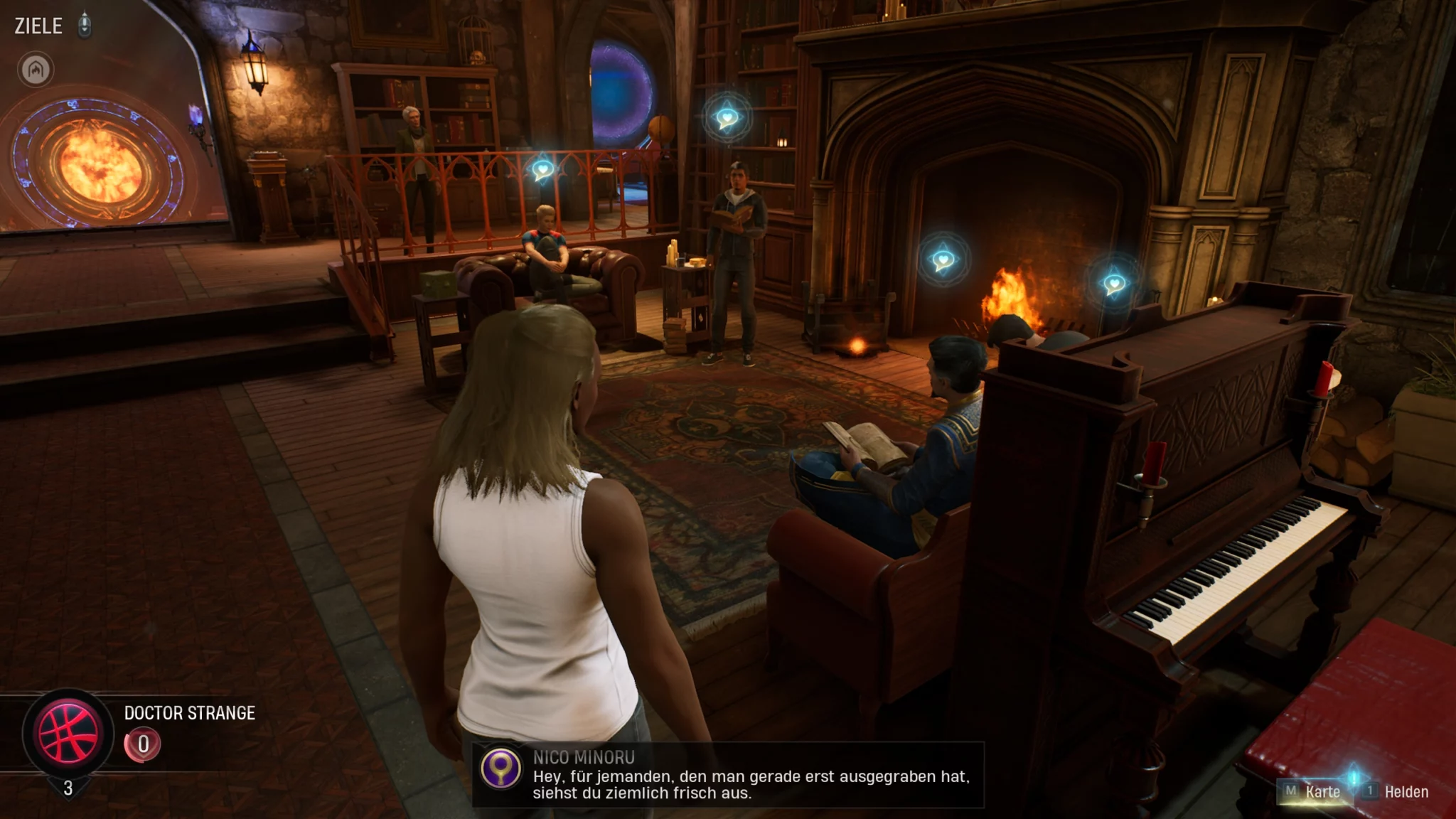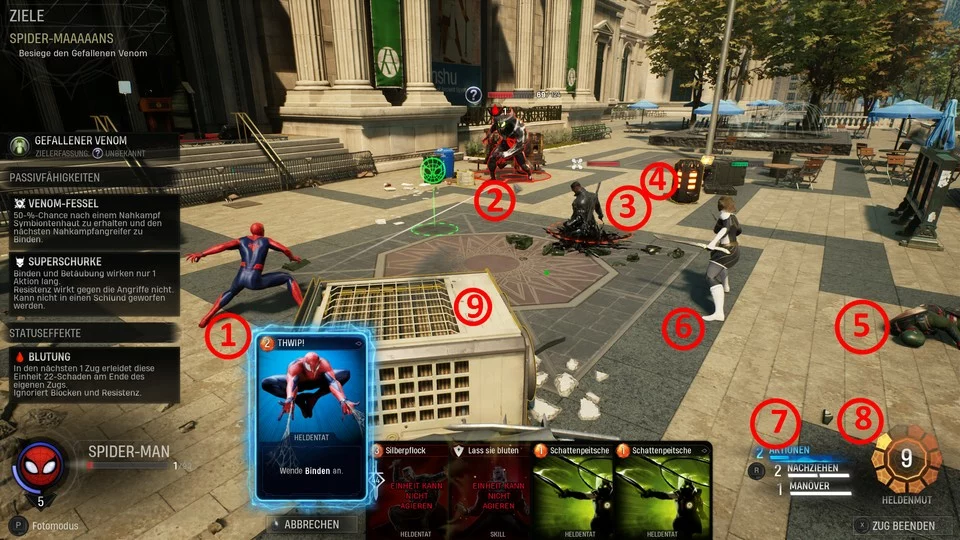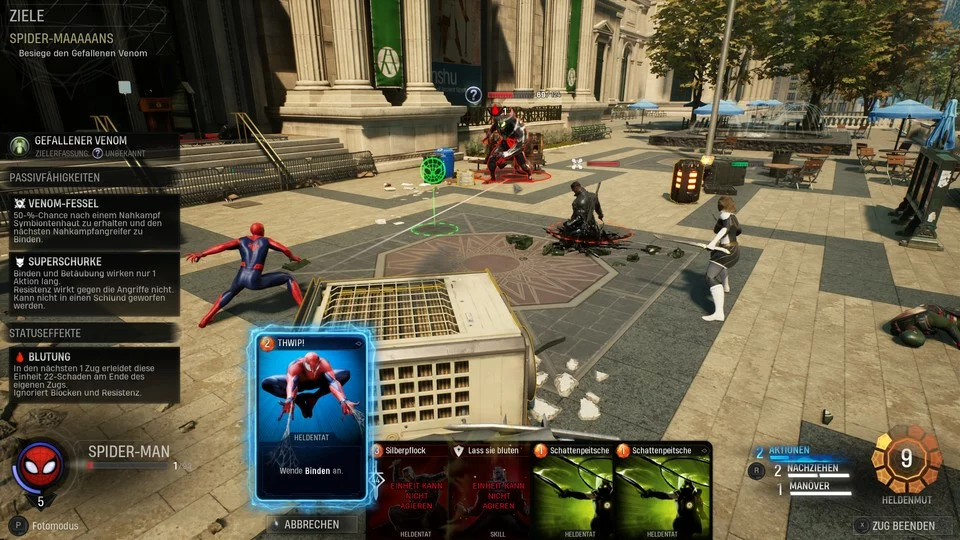“Oh my, Firaxis should finally make XCOM 3 and not some superhero licensed game!” If you think like that, you’re missing out on a really good round tactics game.
Marvel’s Midnight Suns in review: much better than feared, and even more could have been done
“Oh my, Firaxis should finally make XCOM 3 and not some superhero licensed game!” Anyone who thinks like that is missing out on a really good round tactics game.
Wait, almost everyone knows Captain Marvel and Ghost Rider – but who is this Hunter? Don’t worry, you haven’t missed a comic or a movie. Hunter is a hero character (male or female) that you create yourself in the round-table tactics game Marvel’s Midnight Suns.
Initially, you only determine the appearance of the new character, but Hunter’s orientation changes depending on how you play and, above all, how you interact with the other twelve Marvel heroes: Does she tend to follow the dark or the light path?
Table of Contents
Fighting and cuddling
The heroic epic surrounding the newly formed Midnight Suns consists of two main elements. On the one hand, you fight turn-based battles with a selection of your heroes using action cards and movement manoeuvres (for example, to knock down a lantern that is denning on enemies).
On the other hand, between combat missions you run freely through the so-called Abbey with Hunter in shoulder perspective. This serves as the headquarters of the Midnight Suns, including a research station, high-tech forge, library, single rooms and so on.
We can also explore the surroundings of the abbey, for example to pick up more resources lying around that we need for equipment and new action cards. In the abbey and its surroundings we also learn more about Hunter’s background history. Hunter has spent the last centuries sleeping in a sarcophagus. Hunter’s mother Lilith is also chirpy and has just risen to become the “Mother of Demons”.
To save the world from her, Dr. Strange and the others reactivate Midnight Sun’s daughter Hunter. Gradually, you unlock more heroes until you reach twelve: Iron Man, Captain America, Doctor Strange, Captain Marvel, Spider-Man, Wolverine, Blade, Nico Minoru, Ghost Rider, Magik, Scarlet Witch (aka Wanda) and a still-secret person.
Much of the game time is spent chatting, training or hanging out with your co-heroes. If you’ve played Fire Emblem: Three Houses on the Nintendo Switch, you’ll know roughly what kind of rampant socialising is in store…
The battles: powerful card tricks
But for now, let’s get to the core of Marvel’s Midnight Suns: the turn-based battles we engage in with a small selection of heroes. Although the game comes from XCOM developer Firaxis, it has little or nothing to do with the mechanics of the legendary series reboot.
The battles on comparatively small battlefields are mainly fought with action cards. As a rule, we control three superheroes by playing cards, moving a figure, but also using the environment tactically. As soon as our turn is over, it’s the opponents’ turn.
At the beginning of each turn we get a quota of action and manoeuvre points. These apply to our entire group and determine how many action cards we can play and how often we can move a piece around the battlefield.
Most action cards recharge our heroism when they are played. We need this in turn to play particularly hefty heroic deed skills or combo cards of friendly heroes.
Our Daywalker Blade, for example, then deals powerful damage against the intermediate boss Venom with his Silver Stake ability and heals himself at the same time. Captain Marvel, for example, can throw out her Pyro Blast, which sizzles all the enemies in a row.
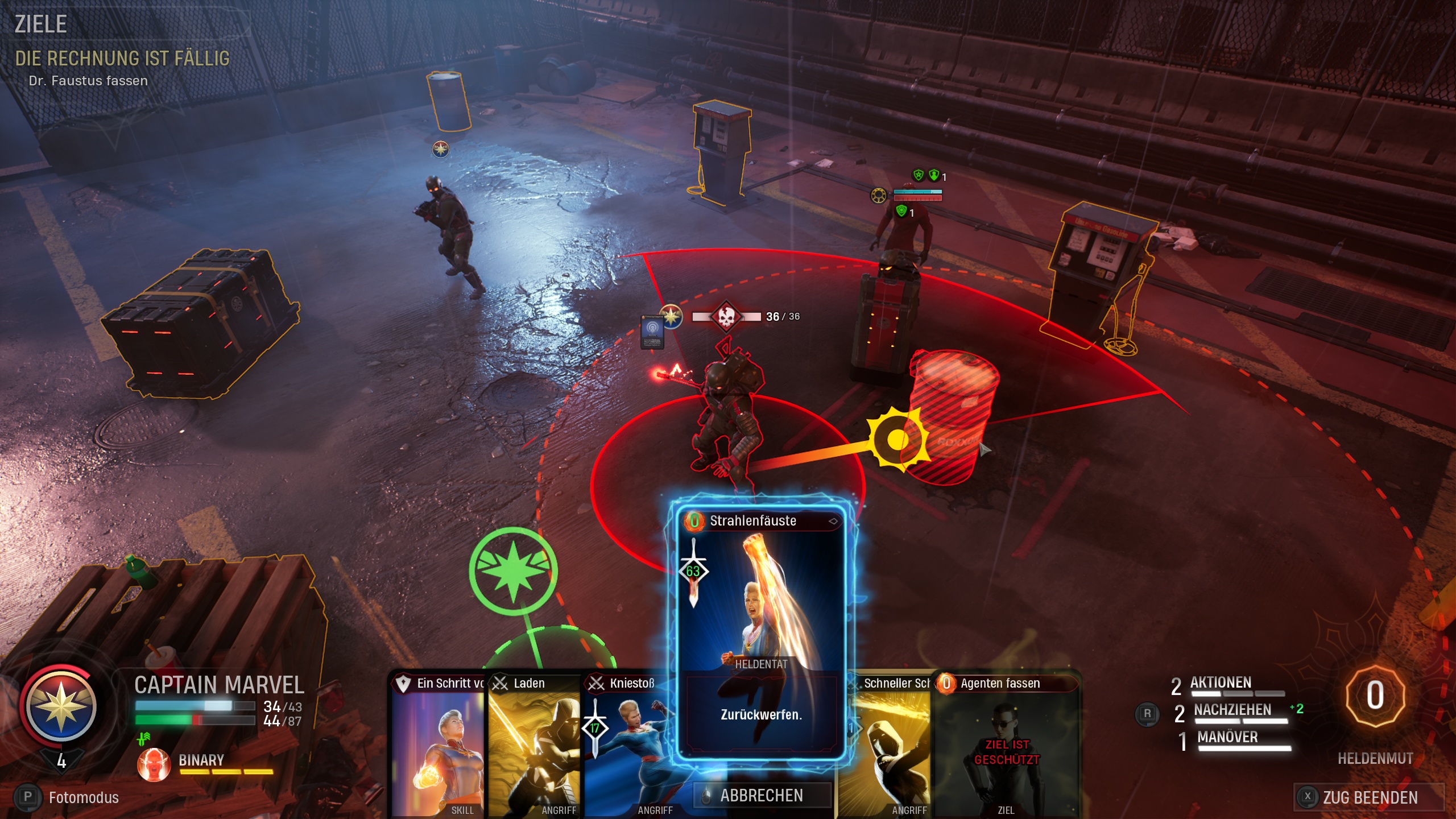
To do this, of course, they should take the optimal position with a manoeuvre point. Aligning abilities with areas of effect is sometimes a bit fiddly, but after all we want to achieve the best effect, so the occasional millimetre work is worth it. It is all the more satisfying when such a photon beam then sits precisely!
I wave my lantern …
Even though the battlefields are small, they are full of tactical possibilities that are really fun. Because we can also use the environment tactically with movement manoeuvres. Power boxes standing around are great for pushing enemies in, because they then take extra damage and have to take a turn on the quiet stairs, so to speak.
If we sabre lanterns at the right angle, they catch several enemies at once, as do exploding gas bottles and petrol pumps. We can hurl newspaper packages lying around, or catapult ourselves over crates into the air to plop down on an enemy with a flourish.
If you like, you can experiment with how to cause as much damage as possible with as little effort as possible! But beware: some enemies also use the environment, we had several electrifying dates with a power box ourselves.
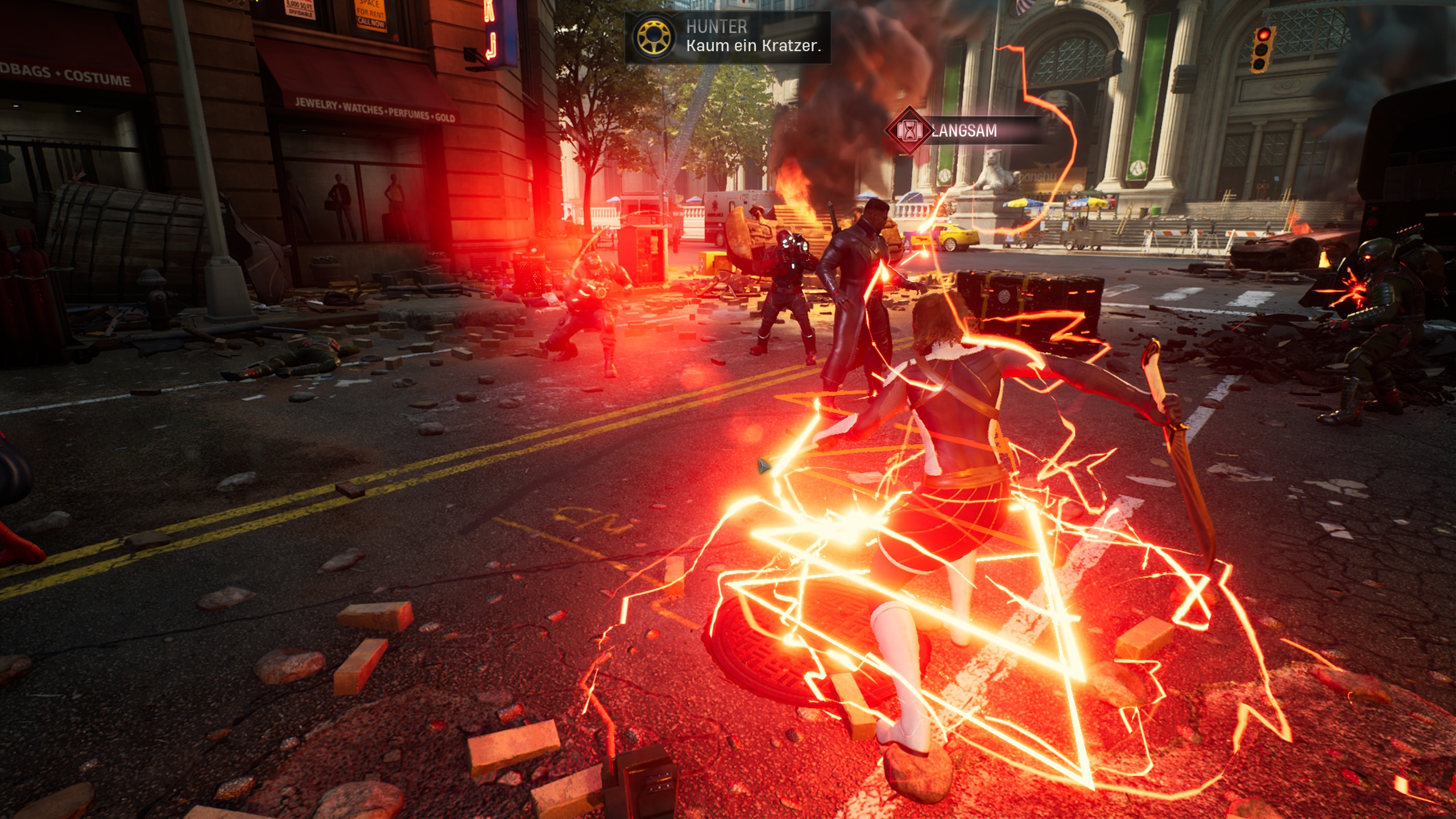
Some battles consist of several phases: When intermediate boss Venom runs amok in New York, we have to rescue trapped civilians by action card. At the same time, Venom throws fat chunks of stone from a skyscraper onto the street at the beginning of each round – a red warning circle on the ground shows exactly where.
Because saving civilians costs action points, we can rarely attack our opponents directly. So we try to kick the toughest enemies into the target area of Venom’s projectiles, to beat them, to whip them, to something. The main thing is to get in there!
And that’s only the first phase of the fight, in the second we have to deal directly with Venom. As we know, Venom is thickly armoured and has nasty abilities such as his symbiote attack, which wraps itself around our heroes and knocks them out. We must attack the symbiote to restore its victim’s ability to act.
In the Heroes’ Shared Apartment
You should spend about half of your play time in the abbey. Because here your type is constantly required. With Hunter you run to the forge to bring Doctor Strange and Iron Man Tony Stark captured artefacts, Gamma Helix or other resources. They’ll use them to research fresh cards for your heroes’ decks, as well as equipment to improve the Abbey.
For example, the high-tech workbench where you can create disposable items for your battles. These in turn give you extra manoeuvres, more penetrating power or healing nanobots. However, the arsenal is not as extensive as in XCOM 2; you mainly produce tools. True to the motto: Superheroes don’t need weapons – they are weapons themselves!
The forge is also your most important source of new action cards. Its biggest advantage is that researcher Tony Stark holds several cards open in front of you, from which you can pick a part.
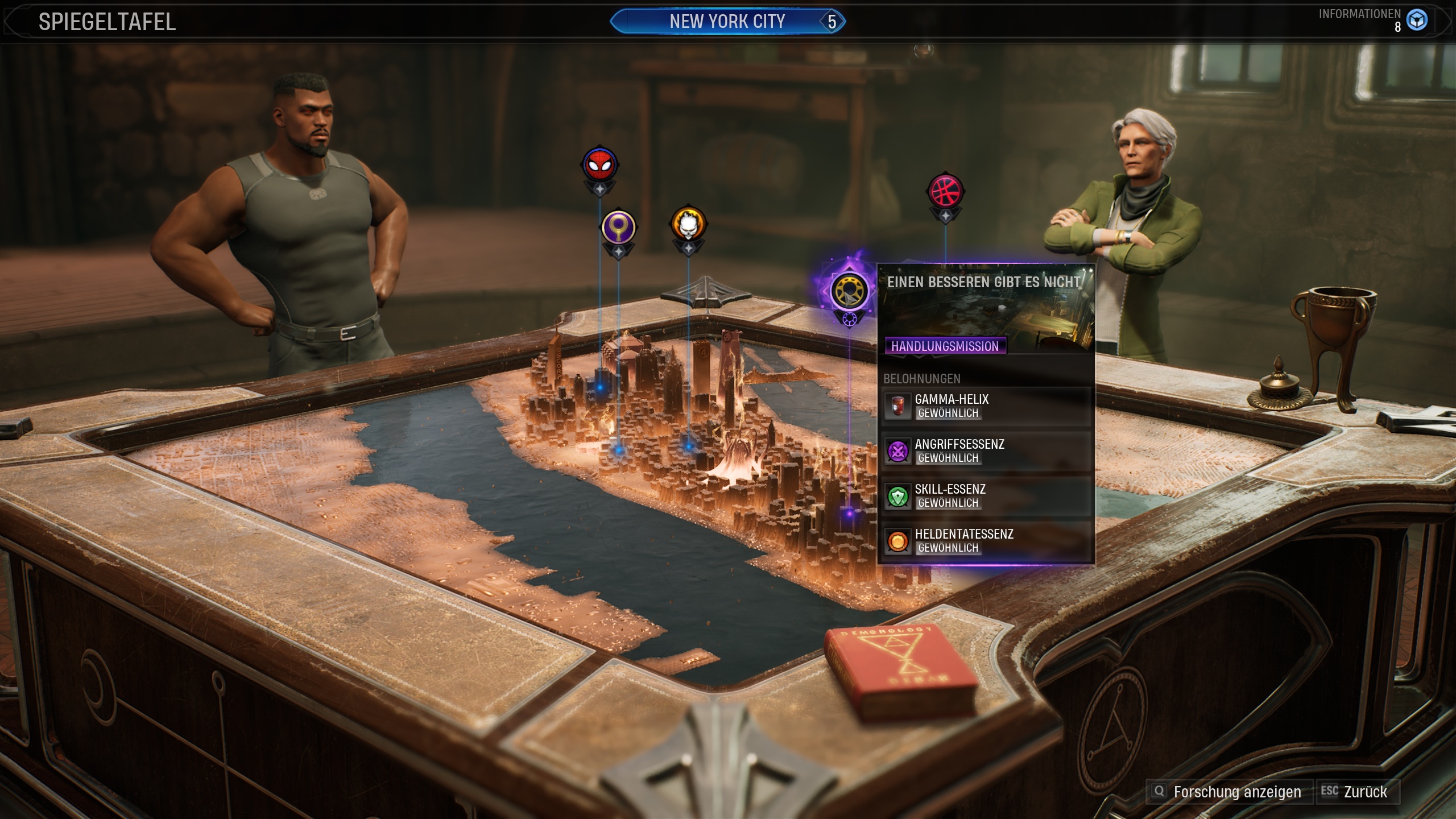
This way you can spice up your decks more effectively than with random cards, which are occasionally dropped by finished opponents, among other things. You can combine double cards to create stronger variants. Finally, in the War Room you will find the so-called mirror board: on the mythical table you choose the next story or side mission. The latter often revolve around a certain hero or simply bring you fresh cards, artefacts or other rewards.
Train and talk yourself to death
But the other housemates also need your or Hunter’s attention. In the courtyard in front of the abbey you can train with a partner every day. To do so, simply choose an uninjured hero or heroine with whom you want to improve your relationship. Or who just offer an interesting reward for a sparring round.
One click later, your friendship level rises and you collect the reward: keys for arcane chests standing around with another reward, new outfits, but also sometimes improved abilities for your card deck. The hero missions, in which you send a single hero away for at least a day, are similarly drawn up and quickly completed; he or she then returns with a card for their own deck, for example.
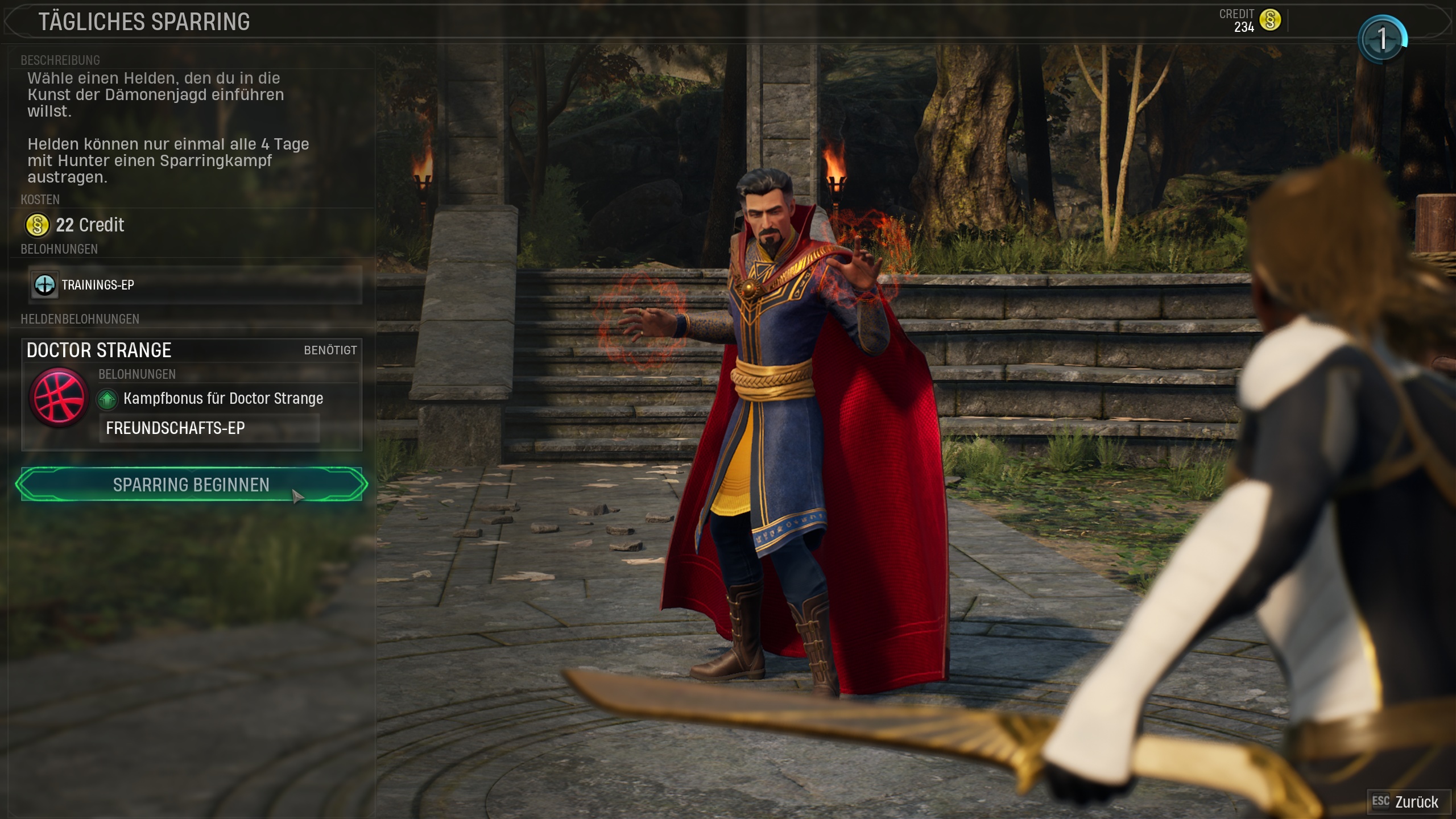
However, hanging out with your colleagues is more time-consuming and annoying in the long run. Someone constantly wants to chat with you by the pool, play video games, watch a film, play poker, look at the stars, whatever heroes do after work.
In the process, you chat about mostly really trivial stuff: What was your childhood like, what did your dad say about it, what do you think of the Avengers, how cool is flying a plane? There are over 60,000 spoken lines of text in the game! You can click through the dialogue quickly, but occasionally there are multiple-choice sentences, and you should pay attention. Because depending on the answer, your relationship improves, and you/Hunter also get points for the light or dark path.
Hunter: good or evil?
You can not only customise Hunter with countless clothes, jewellery and make-up variations, but also her play style via the light/dark points. For example, the lighter she is, the stronger her healing cards will be, and the darker she is, the higher her damage output will be.
With a balanced mix, the likelihood of also getting a mixed card that heals or deals damage increases – but is weaker than with a strong alignment. Hunter is also the only character whose combat costumes bring playful advantages, for example higher crit chances, stronger resistances or more starting hero courage. All other heroes can also dress up in various combat outfits, but these are purely cosmetic.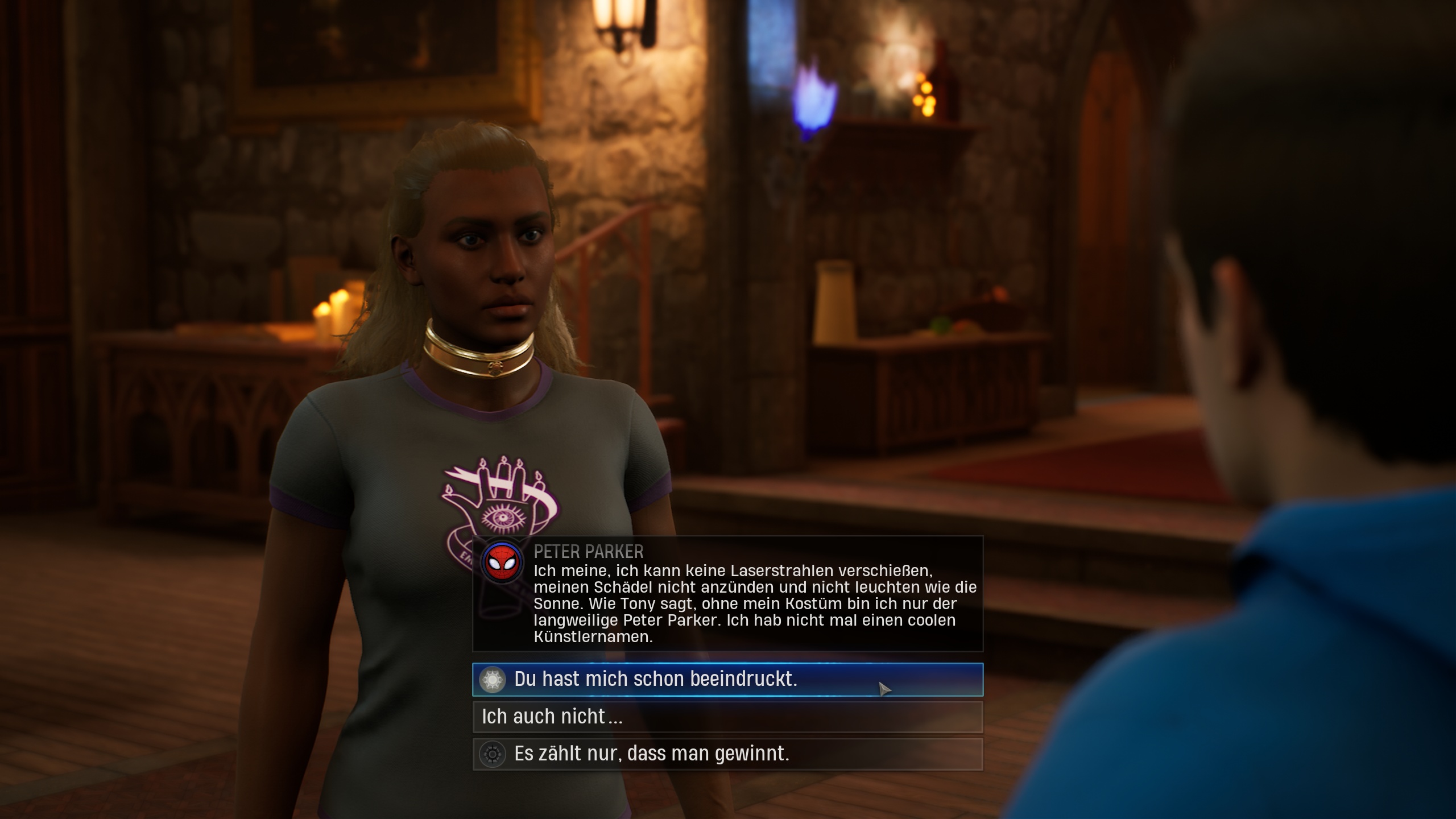
The roles of your fighters are also roughly set. Blade and Ghost Rider, for example, are classic damage dealers, while Doctor Strange and Magik are great supporters. The nimble Spider-Peter is fit in the tactical handling of his environment – i.e. bending lanterns, kicking crates and so on.
But that doesn’t mean that the heroes play one-dimensionally depending on their role, because they all have their own special characteristics. Damage dealer Ghost Rider, for example, loses hitpoints with most attacks and only becomes really strong when several enemies are already lying on the ground. Until then, he needs support from healing or blocking companions. Putting together a team that complements each other well is a nice challenge, and here too it’s a real pleasure to try things out!
And in case you have no idea about all the types: In the game there is a detailed info screen for each one. Not just with dry data and stats, but with lots of tips from the developers on where a character’s strengths and weaknesses lie, and how you can best use them in battle. Exemplary!
Midnight Sims
In parts, the Midnight Suns become Midnight Sims: You can decorate Hunter’s room with furniture, buy your heroes casual clothes, even bikinis and swimming trunks. Items such as candles or decorative skulls lie around the house, which you give as gifts.
And in a kind of social app called Starlink, there is a picture gallery in which you can convert comic covers (as a reward for winning fights) or photos of your sparring matches into paintings. You can put them in empty picture frames in your flatmates’ rooms.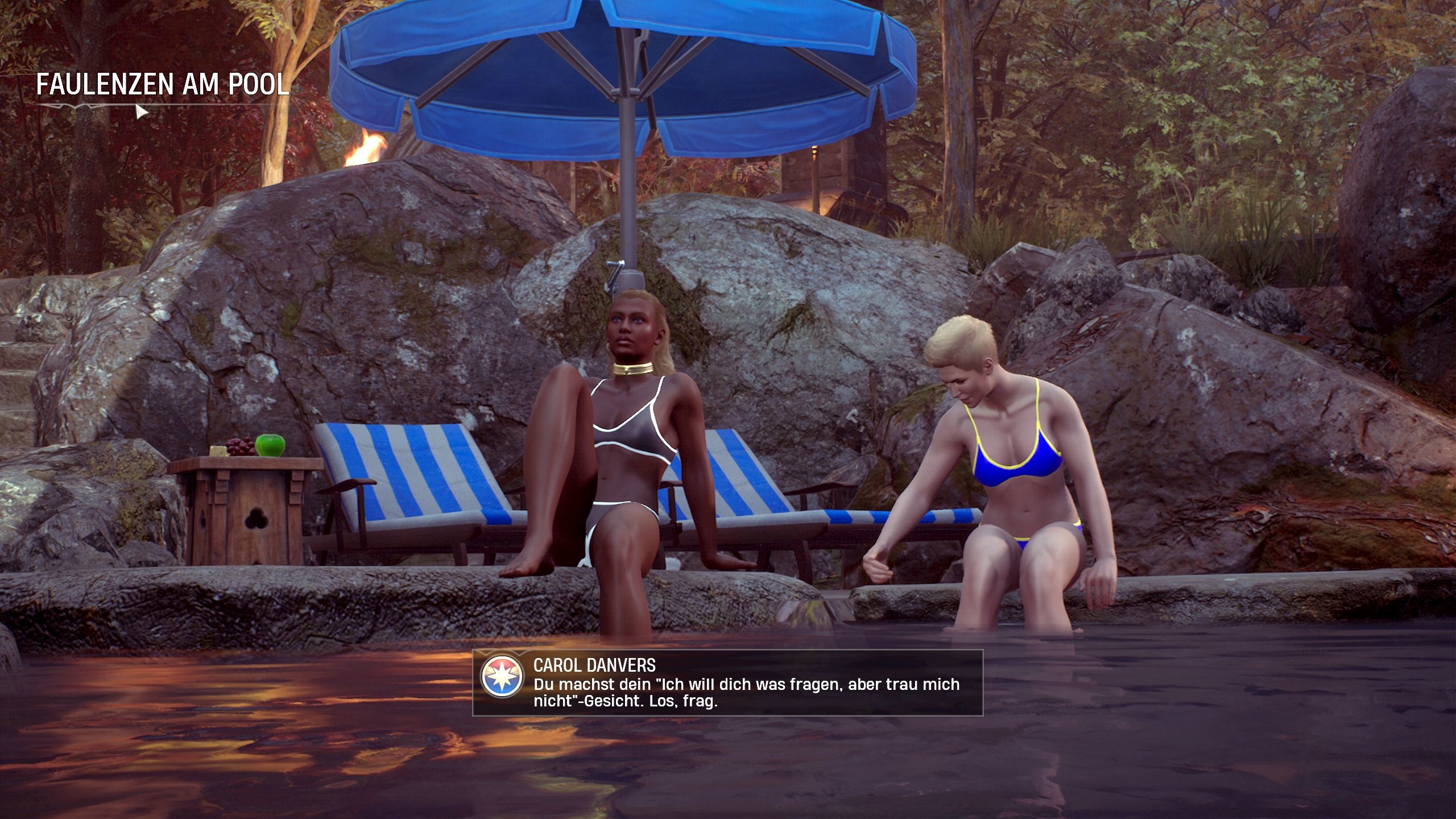
All these actions increase the friendship level to individual heroes, which has a positive effect on the whole team and in turn unlocks new combos.
A similar system was already in place in 2019 in the round tactics game Fire Emblem: Three Houses – there, too, you spend a lot of time maintaining friendships, improving abilities and so on. The difference is that the relationships there are more profound and have more twists and turns, and the fates of the protagonists touch us more than in Marvel’s superheroes. If only because our beloved fighters in Fire Emblem can die – the heroes of Midnight Sun, on the other hand, cannot.
Heroes without a backbone
There’s quite a discrepancy in the graphics: In the battles, hand-built combat zones and especially the elaborate, brute cutscenes, Midnight Suns really revs up visually. But in the abbey, the animations are really lanky: When our Hunter stops moving, her upper body sways back – as if her legs want to keep walking on their own.
Even the wiry Spider-Man stands around as if he had no backbone. Heroes dozing on their beds look too small, and when a character crosses his arms in front of his chest, they tend to be much too high, almost under his chin.
Here you notice that Firaxis has a lot of experience with combat animations in turn-based strategy games, but little with free movements through a 3D environment. But it’s always better than the other way round! And: sound effects, voice actors and music are all of a high standard.
The playing time of Marvel’s Midnight depends heavily on how much time you spend on side missions and the extensive socialising. But even if you play tightly through, you should be busy for 30 hours.
Editor’s verdict
Oh, if only Firaxis had taken a cue from Rambo 3: this terse but profound dialogue creates a moment for the ages. And what do the Midnight Suns do? Talk, talk, talk! Over 60,000 lines of text are simply 50,000 too many. But fortunately I don’t have to listen to all of them, because I don’t have to chat with all the heroes and I’m allowed to skip dialogue sometimes.
And the game doesn’t need such extensive socialising between missions. Because the battles are great, the interplay of hero skills, action cards, tactical manoeuvres and lantern throwing works wonderfully. I love experimenting with the different skills and environments, and depending on the heroes you take with you, battles play completely differently.
I’m not a hardcore Marvel fan, but like the game’s strong, brute cutscenes and dramatic soundtrack. However, you should have some interest in superheroes, otherwise you won’t warm to it. By the way, I promised the Midnight Suns something as soon as this test was finished: “I’ll be back!

